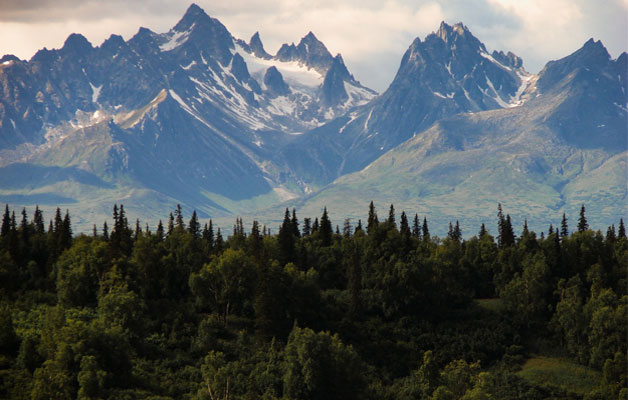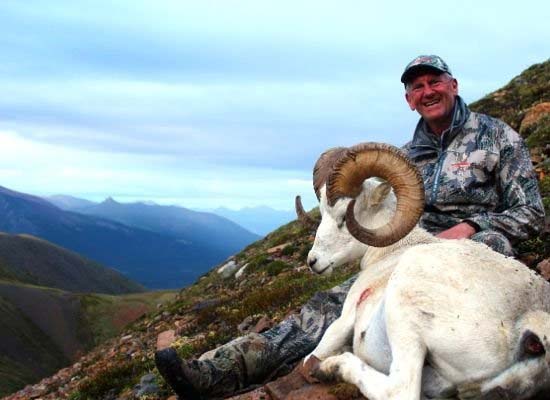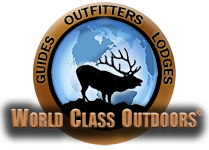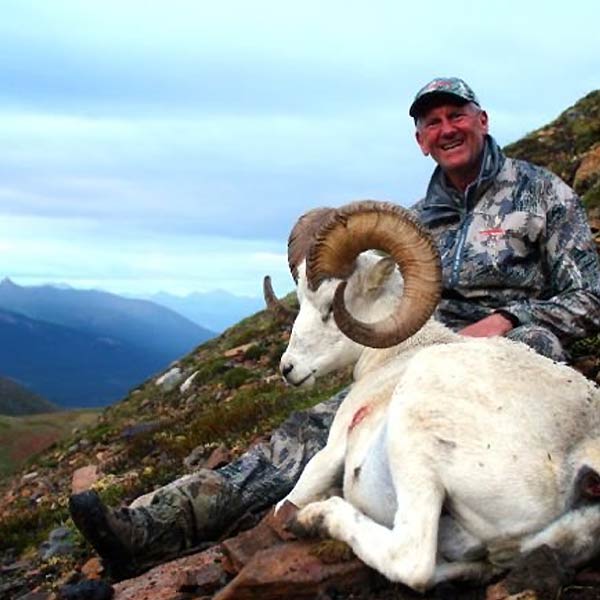Find Northwest Territories
Hunts on the Map
Hunting in NT Canada
Whitetail deer are found throughout the country and have the largest population of any big-game in Canada. Mule deer are also present but are located more to the west than anywhere else. Deer graze on nuts, berries, vegetation, woody substances, and acorns. Deer are cautious and usually travel into the wind for protection.
A huge draw for NT is the Dall Sheep Hunting. That’s a hunt of a lifetime in anyone’s book! Caribou, Elk, Moose located primarily in the Canadian Rockies or in the Northern swampy regions, but migrate and can be seen in many regions. During the winter, they usually stick to valleys and low-lands. They graze on a variety of nuts, fruits, and low-lying vegetation.
Black bears tend to stay to their small personal territories. They prefer dense forest and will eat meat and plant life as well. If meat is scarce, Black bear stick to berries, fruit, and vegetation. Grizzly bears stake their ground close to rivers and streams. This affords them an abundant supply of salmon. They also eat other types of meat, fruits, berries, and vegetation.
Cougars live in the higher elevations of western Canada. Cougars are impressive hunters and living bedding at slightly high altitudes allows them to see danger or food from a great distance.
The ever-impressive Dall Sheep are hunted in the mountains – The Mackenzie Mountains is the prime hunting location for Dall Sheep and Mountain Goat.
.
Hunting in the Northwest Territories in Canada epitomizes a big-game hunter’s snowy paradise. The Northwest Territories reach over a half a million square miles. As a result, the climate is very diverse from the south to north. Southern regions are subarctic while northern territories are exclusively polar. The wildlife in the Northwest Territories reflects these climate differences.

Northwest Territories Hunts Available
Residents and tourists hunting the Northwest Territories enjoy a large bear population leading to popular Black bear and Grizzly bear hunts. Whitetail and Mule deer also frequent these regions. Caribou, Elk, Moose and huge Dall Sheep constantly travel, and in herds. Cougars also provide an adventurous hunting experience, as do Wolf.
The hunting method most used with these animals is the spot and stalk approach. Guides start these hunts from a vantage point. Higher ground allows the team to locate the animal of choice. Compound bows are often used, but when stalking bear, it’s common to see most hunters with a sidearm for safety reasons. Cougars are usually run down with hunting dogs. Whatever the preferred main weapon may be, most predator hunters always carry a sidearm for safety.
Hunting in NT Canada
Whitetail deer are found throughout the country and have the largest population of any big-game in Canada. Mule deer are also present but are located more to the west than anywhere else. Deer graze on nuts, berries, vegetation, woody substances, and acorns. Deer are cautious and usually travel into the wind for protection.
Caribou, Elk, Moose located primarily in the Canadian Rockies or in the Northern swampy regions, but migrate and can be seen in many regions. During the winter, they usually stick to valleys and low-lands. They graze on a variety of nuts, fruits, and low-lying vegetation.
Black bears tend to stay to their small personal territories. They prefer dense forest and will eat meat and plant life as well. If meat is scarce, Black bear stick to berries, fruit, and vegetation. Grizzly bears stake their ground close to rivers and streams. This affords them an abundant supply of salmon. They also eat other types of meat, fruits, berries, and vegetation.
Cougars live in the higher elevations of western Canada. Cougars are impressive hunters and living bedding at slightly high altitudes allows them to see danger or food from a great distance.
The ever-impressive Dall Sheep are hunted in the mountains – The Mackenzie Mountains is the prime hunting location for Dall Sheep and Mountain Goat.
Northwest Territories Hunting Regs
Season dates vary and in order to get the most up-to-date information about seasons and bag limits, visit Canada’s environment, forests, lands, and natural resources site, or contact one of our featured guides.
Because hunting in Canada is slightly different than hunting in the United States, especially concerning regulations, there are a few changes to the hunting regulations. Although the minimum age to purchase a hunting license is now 12 years old, youth between 12 and 18 can still hunt under the authority of a guardian’s license.
Moreover, new residents must have lived in the area to purchase a resident hunting license. Non-residents and non-resident aliens must hire an outfitter to hunt in Canada. A non-resident alien is someone who is not a resident, and someone who has not lived in Canada for at least one full year.
Anyone over 18, who wishes to hunt in Canada, must purchase a hunting license, and tags for specific animals.
Visit Canada’s environment, forests, lands and natural resources website at http://www.env.gov.bc.ca/fw/ for more detailed information.
Northwest Territorites Outdoor Tidbits

Hunting is definitely not the only activity to enjoy in the NWT of Canada. It may not be easy to get to, but once you are there, you can enjoy the great outdoors in a really big way! Some of these activities include:
• Canoeing
• Dog Sledding
• Fishing
• Hiking and Backpacking
• Kayaking
• Rafting
• Heli-Hiking
• Horseback Riding
Our guides can assist in scheduling a hunt as well as planning for travel and lodging.

